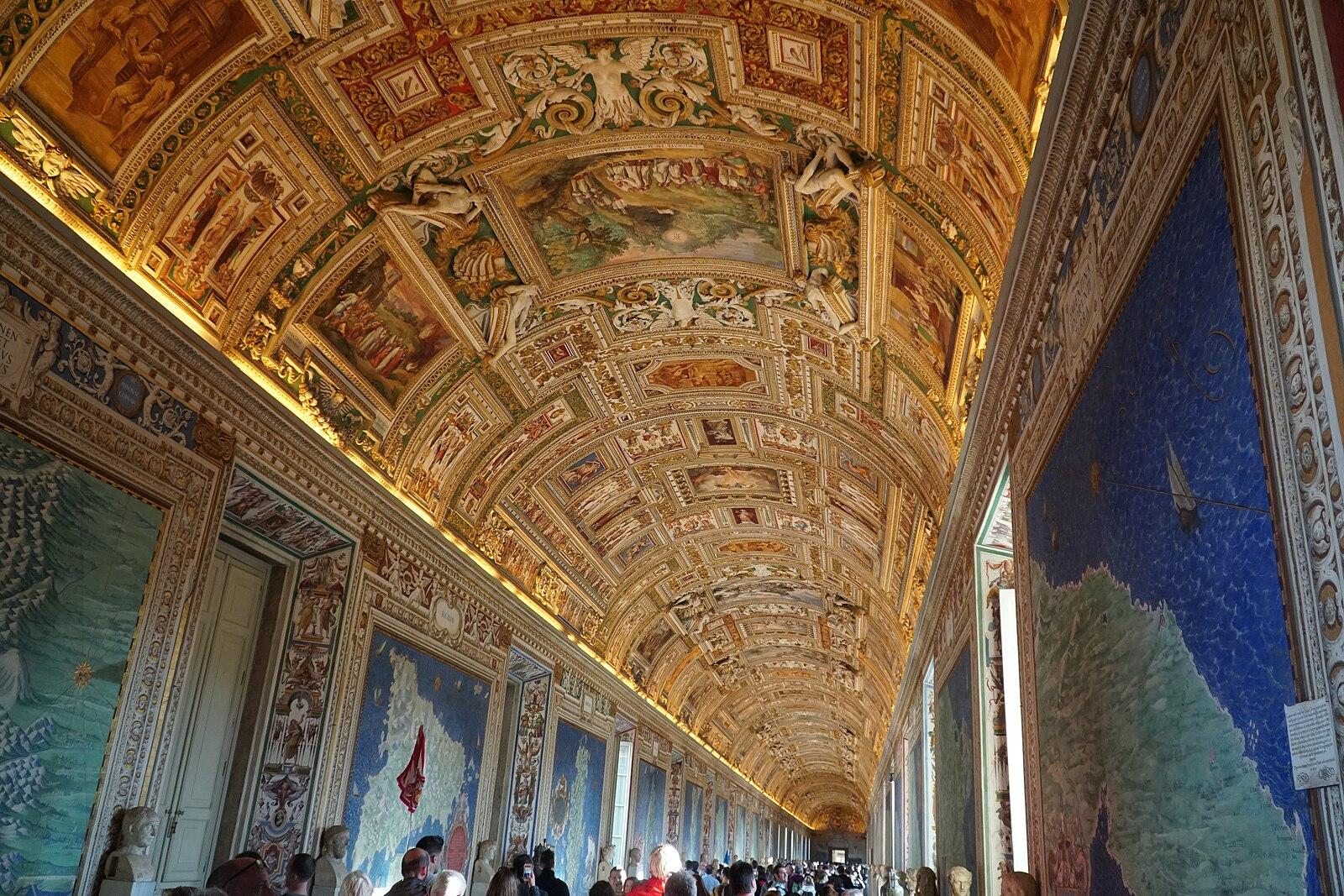Visiting the Vatican Museums is a must for anyone coming to Rome. This place brims with centuries of art, culture, and history. Located inside Vatican City, these museums hold an incredible treasure of paintings, sculptures, and religious artifacts. For travelers staying nearby, there are many accommodation options from cozy guesthouses to modern apartments. After a visit to the museums, trying local Roman dishes like carbonara or suppli at nearby trattorias can complete your day perfectly.
Table of Contents
If you want to see where some Vatican art treasures originated, visit our St. Peter’s Basilica guide, it shares nearby sights and travel tips.
To complement your visit to the Vatican Museums, consider reading our guide on the Pantheon in Rome, which highlights another key historic and architectural treasure nearby.
Reaching the Vatican Museums is easy from Rome’s city center. You can take the metro line A to Ottaviano station, just a short walk away. From Fiumicino Airport, the Leonardo Express train to Termini Station connects to the metro for a smooth journey. You might also find buses and taxis convenient depending on your schedule. Once you arrive, prepare for a rich experience full of stories and art that shaped Western culture.
Why the Vatican Museums Matter So Much
The Vatican Museums are more than just a place for old paintings and statues. They reflect the power and influence of the Catholic Church through art collected over 500 years. Founded in the early 16th century by Pope Julius II, these museums showcase masterpieces by artists like Michelangelo, Raphael, and Caravaggio. The Sistine Chapel ceiling, painted by Michelangelo, is a highlight that many visitors dream to see in person.
What makes these museums unique is how they mix art with religion, history, and politics. For example, the Raphael Rooms served as the pope’s private apartments and are now filled with frescoes telling powerful stories. Every corner of the Vatican Museums tells a piece of Italy’s and Europe’s past, making each visit a lesson in both culture and faith.
Getting There: Directions and Transport Tips
From the heart of Rome, the easiest way to reach the Vatican Museums is by metro. The Ottaviano-San Pietro stop on Line A is the closest station, about a 5 to 10-minute walk from the museum entrance. Walking from here provides a nice view of Vatican City’s Saint Peter’s Basilica approaching ahead. For those coming from Rome’s main train station, Termini, a quick metro change makes the journey straightforward.
For travelers arriving at Rome’s Fiumicino Airport, taking the Leonardo Express train to Termini and then switching to metro Line A is recommended. Alternatively, shuttle buses run directly from the airport to Vatican City but may take longer depending on traffic. If you prefer a more private ride, taxis are always available but expect higher costs during peak hours.
What to Know Before Visiting Vatican Museums
Best Time and Day to Visit
The Vatican Museums attract millions every year, so timing your visit right can make a big difference. Weekdays, especially mid-week mornings, tend to be quieter. Avoid weekends and Wednesdays when the Pope’s general audience can cause crowds. Early mornings right at opening or late afternoons before closing hours usually offer calmer visits and better light for photography.
Booking Tours and Tickets
Due to high demand, buying tickets in advance is a smart move. The Vatican Museums strongly recommend online reservations to avoid long lines. There are options for guided tours, audio guides, or simple entry passes depending on your preference and budget. Guided tours can unlock deeper stories behind the art, but exploring independently gives you freedom to linger where you want.
Museum Highlights Not to Miss
- The Sistine Chapel: Famous for Michelangelo’s stunning ceiling and The Last Judgment fresco. This is often the highlight of any visit.
- The Raphael Rooms: These rooms contain brilliant frescoes by Raphael that once served as papal residence spaces.
- Pinecone Courtyard: A peaceful spot with a huge ancient bronze pinecone statue, often overlooked by visitors rushing through.
- Gallery of Maps: A long corridor adorned with detailed maps of Italy’s regions from the 16th century.
- Egyptian and Etruscan Collections: These sections showcase fascinating artifacts from ancient civilizations not always expected in the Vatican.
Little Known Facts and Stories
Many visitors miss small details that add magic to the visit. Did you know the Vatican Museums once hid a secret exit for the popes? Known as the Passetto di Borgo, it connects the Vatican to Castel Sant’Angelo and was used during emergencies. Also, the museums are a living space, with new acquisitions and ongoing restorations happening regularly, so each trip can reveal something new.
Another quirky fact: many artworks were once hidden or forgotten and only rediscovered centuries later. For example, the Laocoön statue, a famous marble masterpiece, was found buried in a vineyard and changed the course of Renaissance art theory.
Visitor Tips for a Smooth Experience
- Wear comfortable shoes. The museums cover large spaces and you will walk a lot.
- Dress modestly. Vatican City enforces a strict dress code; shoulders and knees should be covered.
- Bring water and small snacks. Food inside is limited and queues can be long.
- Use the official Vatican Museums website to buy tickets and check opening hours: Vatican Museums official site.
- Photography is allowed in most areas but not inside the Sistine Chapel.
Nearby Accommodation and Local Flavors
Staying close to the Vatican Museums gives you a chance to enjoy the area’s calm early mornings and evenings. The neighborhoods around Vatican City offer a mix of charming local markets, cafes, and small restaurants serving Roman classics. Try fresh pasta dishes like cacio e pepe or artichoke specialties when in season. The nearby Piazza Risorgimento area has many family-run trattorias that welcome visitors with warm smiles and honest food.
Final Thoughts on Visiting Vatican Museums
Visiting the Vatican Museums is like stepping into a vast storybook of human creativity and spiritual devotion. Each room offers something to wonder at, from grand halls to small hidden gems. With a bit of planning, you can experience this treasure with comfort and joy. Whether you come for the art, history, or the sheer awe of the place, the Vatican Museums will leave a lasting impression on your time in Rome.

Art museum enthusiast who loves contemporary art and spends days wandering through exhibitions.
